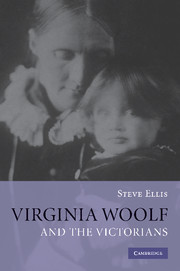Book contents
- Frontmatter
- Contents
- Acknowledgements
- List of editions and abbreviations used in the text
- Indroduction
- Chapter 1 Reclamation: Night and Day
- Chapter 2 Synchronicity: Mrs Dalloway
- Chapter 3 Integration: To the Lighthouse
- Chapter 4 Disillusion: The Years
- Chapter 5 Incoherence: the final works
- Conclusion: reclaiming the shadows
- Notes
- Index
Indroduction
Post-Victorian Woolf
Published online by Cambridge University Press: 22 September 2009
- Frontmatter
- Contents
- Acknowledgements
- List of editions and abbreviations used in the text
- Indroduction
- Chapter 1 Reclamation: Night and Day
- Chapter 2 Synchronicity: Mrs Dalloway
- Chapter 3 Integration: To the Lighthouse
- Chapter 4 Disillusion: The Years
- Chapter 5 Incoherence: the final works
- Conclusion: reclaiming the shadows
- Notes
- Index
Summary
On 22 September 1925 Woolf noted in her diary that she had been approached by her cousin Herbert Fisher to write a book ‘for the Home University Series on Post Victorian’ (Diii. 42). Though she turned the offer down for reasons we shall return to – ‘To think of being battened down in the hold of those University dons fairly makes my blood run cold’ (Diii. 43) – it is worth speculating on why she was thus approached, and on what she (or Fisher) would have understood by the term ‘Post Victorian’ (or ‘Post-Victorian’ as it is used in this present book) in 1925. Did Fisher see Woolf as a writer in the vanguard of a modern movement that had definitively moved on from the Victorian, the stress thereby falling on the sense of ‘Post’ to mean ‘after’? Or did he (which is rather more unlikely) have a sense of Woolf's position as I investigate it in the following pages, that is, as a writer whose modern and innovatory practice coexists with a powerful nostalgia for various elements of Victorian culture and the desire to proclaim these in her work? In this sense, ‘Post’ has more of the value it carries in expressions like Post-Impressionism or postmodernism, a complex relationship of difference and debt that is the subject of this study.
- Type
- Chapter
- Information
- Virginia Woolf and the Victorians , pp. 1 - 11Publisher: Cambridge University PressPrint publication year: 2007



